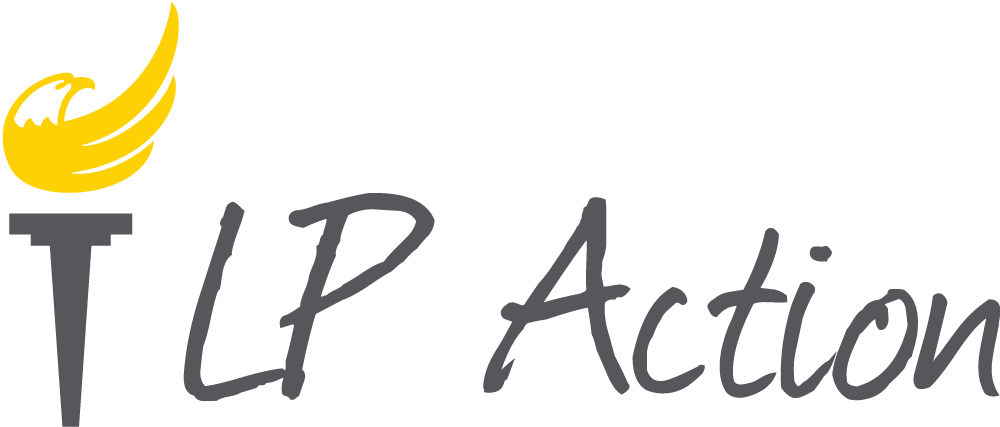Direct Mail
Direct Mail

Techniques to make your direct mail letters raise more money
There are three myths about direct mail fundraising…
- Fundraising is begging
- You can do it too often
- People don’t read long letters
Fundraising isn’t begging. Standing on the sidewalk and harassing people for money is begging. Fundraising is the act of describing something that needs to be done, saying how much it costs, and asking people if they value the proposed project enough to help pay for it. If they don’t value it, they won’t give. If they do, they will. It’s just like any other economic exchange. People won’t pay for what they don’t want. In addition, direct mail is passive. People get to decide, in the comfort of their own home, whether or not they want to give. No one is standing over them with a gun. If you aren’t doing direct mail fundraising then you should be. You have projects you want to do that other people will also want to see done. Give them the chance to help.
Only the market can determine whether or not you are asking for money too often. If you start to raise less and less money from each appeal, then you’re asking for money too often. If you’re raising more and more money with each appeal, then maybe you should try asking more often. If the amount of money you raise is fairly consistent, then you’re probably asking for money just about the right amount of times.
The Republicans mail fundraising letters to their members 52 times a year. That’s once a week. They wouldn’t be doing that if it wasn’t profitable, and people wouldn’t be giving enough to make it profitable unless they were geting personal satisfaction from it. The national LP mails fundraising letters about once a month. We would do it more often if we had more immediate ability to effect public policy as the Republicans can. And as we gain that ability, you can bet that we’ll start to mail more often, as the market dictates.
Personal opinions about how short or long a letter has to be in order for people to read it are worthless. What matters is what the market tells us. And the market says long letters tend to work better. This has been confirmed by so many split-list tests that, as a general proposition, it’s no longer even debated. However, it’s important to understand some of the reasons why longer letters tend to do better. To understand this, we have to understand the different kinds of people who read direct mail.
There are four types of people who read direct mail . . .
- Those who don’t read it at all, but throw it right in the trash.
- Those who read just the beginning and the ending of a letter.
- Those who skim the highlights.
- Those who read the entire letter.
- For people who throw direct mail in the trash the length of a letter doesn’t matter, because they’re not going to read it anyway.
- For those who read just the beginning and the end, the length of the letter doesn’t matter, because they’re only reading the beginning and the end, so the number of pages in between is irrelevant.
- For those who just skim the highlights, the more highlights you have, the more opportunities you provide to either close the sale on the basis of your highlighted points, or to convince them to sit down and read the letter as a whole.
- And for those who are so interested in your organization that they will read the letter as a whole, the more sales points you can make, the more likely you are to convince them to give. Therefore, your letter should be as long as is required to include every positive sales point that you can think of.
There are two types of direct mail letters …
- Fundraising
- Prospecting
A fundraising letter is any letter that is mailed to people who have already given you money in the past. It’s almost impossible to lose money on a mailing of this kind.
A prospecting letter is any letter that is mailed to people who have never given you money before. It’s almost impossible to make money on this kind of letter. Prospecting letters are valuable only in terms of the future income you will receive from any new contributors to discover.
Good prospecting letters are much harder to write than good fundraising letters. Doing so will be beyond the ability of most local organizations until they are large enough to hire professional copy writers. However, the suggestions made below will allow you to write a good fundraising letter.
There are two cornerstones to a good fundraising letter. . .
- The unique sales proposition (USP)
- The complete sales argument
Before you start to write a fundraising letter, you should try to figure out what it is about the project you will be proposing that will be uniquely valuable to your contributors. This unique selling proposition will provide the substance for your appeal.
The second thing you should try to do is figure out all of the questions and concerns that contributors might have about your project. This will allow you to construct a complete sales argument. It is the number and nature of the concerns and questions you will have to address that will tend to make your letter longer rather than shorter.
A good fundraising letter has five parts.
- Progress
- Plans (or the project description)
- The request for money
- The reminder
- The postscripts
It’s very important to build continuity between your fundraising letters. You want the letter you write this month to refer to the letter you wrote last month, and point to the letter you plan to write next month. You do this by using a “plans and progress” approach.
You begin by reporting the progress you have made with regard to the plans you described last month.
You continue by explaining how that progress relates to the plans (projects) you are going to talk about this month.
Then you describe your plan, and address all anticipated concerns and questions.
Then you describe how much the project is going to cost and ask for the money to pay for it. The best way to ask for money is to list a whole series of contribution amounts, from high to low, so that the reader will be able to see that the amount they have in mind will be of value to the project. This has been tested over and over again — if you don’t list a series of amounts then the reader wonders whether the amount they have in mind will really help, and they tend to not give.
After you’ve asked for the money you remind them about what you’ve accomplished in the past due to their support and express the hope that they will be able to help you again, so that you can take the next step forward. Then you thank them and sign the letter.
Then you include two PS’s. The PS’s are for the people who tend only to read the beginning and the end of a direct mail letter. Therefore, you will want to try to recapitulate your sales argument, in miniature and, if possible, do it in such a way that they are teased to go back and read the letter as a whole. In the second PS, you will want to remind them of your deadline in order to create a sense of urgency that they should send their check right away. This is also the point at which you remind them about any “premiums” you may be offering, and tell them that they will be sent just as soon as you get their contribution.
A note on premiums: You will want to keep the total cost of fulfilling a premium to 6% of the gift that is required to receive that premium. By far the best kind of premium is what is called an “identity” premium, which is anything which serves to make the contributor feel good about having contributed. A good example of this would be to put their name on a plaque that will be displayed either in your headquarters, if you have one, or at your public meetings.
In addition, there are nine techniques that will enhance the readability of your letter…
- Invincible questions
- Bulleted items
- Foreshadowing (or teasing)
- Short paragraphs
- Broken paragraphs and broken sentences
- “Stopped” sentences
- Widows
- Contractions
- Cliches
You want to begin the letter with something that draws the reader in, and makes them want to read further. Invincible questions are good for this purpose. An invincible question is any rhetorical question which you can be certain your reader will answer in a positive way, and which will tend to excite their curiosity about the contents of the letter. The invincible question will tend to foreshadow your unique selling proposition.
A good second step is to then list all of your recent progress, using quick bulleted items, and, while doing so, foreshadow, or tease about your project, or unique selling proposition: This should be easy, since at least some of your progress will have set the stage, in some sense, for what you want to propose.
Example
- Since we last wrote to you we have ten different info booths and collected over 100 names of new prospects. Keep reading and I’ll tell you what we’re going to do with these prospects.
Then, when you get to the part of the letter where you want to describe your project, it might look like this . . .
- Remember those prospects I told you about at the beginning of the letter? Well, we’d like your help in recruiting them as members of the party. To do that, we’re going to hold an “Introduction to Libertarianism” at the Holiday Inn on Beale Street.
When you have laid out the basic skeleton of your letter — your progress, your plans, your request for money, your reminder, and your postscripts — you will then go back and work to enhance the readability of your letter still further.
- You will add more bulleted items where possible.
- You will add more foreshadowing and teasing where possible.
- You will make sure that most or all of your paragraphs take up no more than three lines each.
- You will make sure you have a line of white space in between paragraphs.
- If you need to break paragraphs in two in order to keep them to three lines you will do so.
- In order to heighten tension you will want to create unnatural breaks in your longer paragraphs, so that your last sentence ends with an ellipses . . .
. . . so that the sentence continues after a line of white space and centered the way this one is (the centered text containing the significant part of the sentence).
This is a form of highlight, so that important points don’t get lost in the blur of words, and your skimmers can pick them out from the rest of the text.
- You will then look for sentences that you can shorten or break into two. There is a technique used by novelists that can be of help here. It’s called creating a sentence with an “artificial stop” in it. For instance . . .
The man walked into the room. (You now know that a man has walked into a room, but you’re led to wonder why.)
He walked over to the table and picked up the gun that was lying there. (You know that there’s a gun, but you don’t know why, and you’re led to keep reading).
He looked at the gun for a moment and then put it to his head.(The tension is built up slowly but surely, so that you have more and more information, but are left with questions. Each “stopped “sentence answers a previous question and then asks another — why is the man putting the gun to his head?)
- Next, you will make sure than no page of your letter ends with a finished thought. You will create “widows” (sentences that are continued on the next page) to make sure that the reader has to turn the page in order to get the completed thought.
- Finally, you will go back through your letter and use contractions wherever possible. Can’t, instead of cannot. This will make the letter more friendly and personal. You will not, not, not worry overly much about grammar, because you want your letter to sound like spoken speech. But you do, do, do want your writing to be clear, clear, clear.
- Do not be afraid of using cliches. Cliches are universally understood, and can communicate your point much quicker than long expositions. Your letter should be built for speed.
[By Perry Willis]



